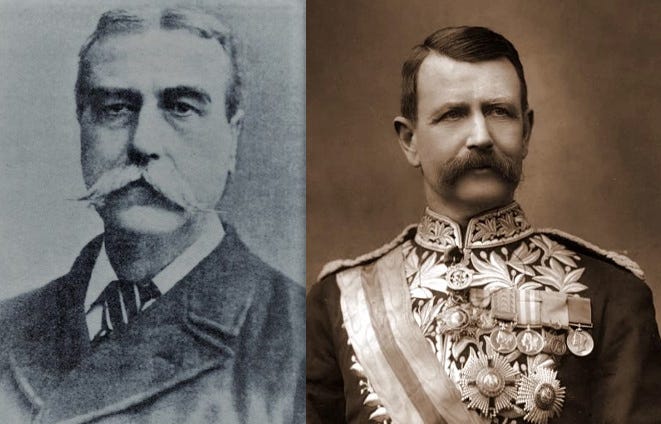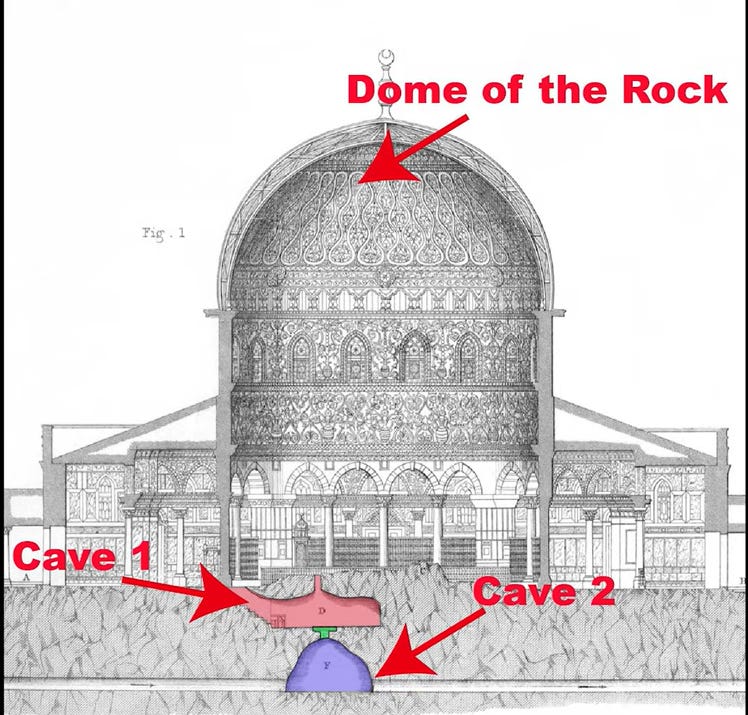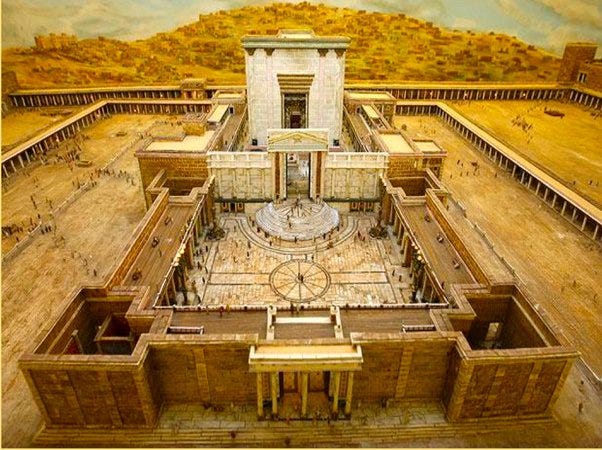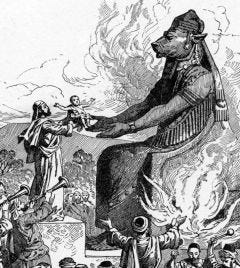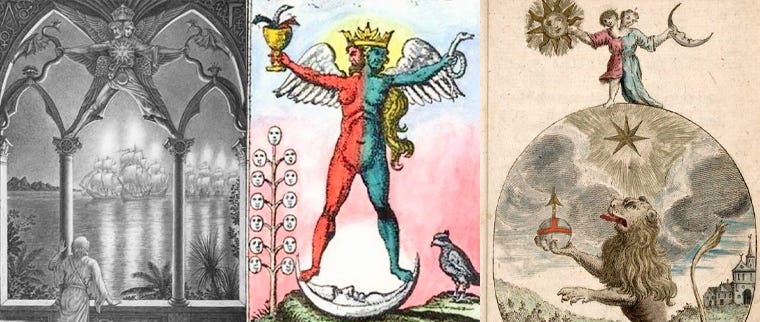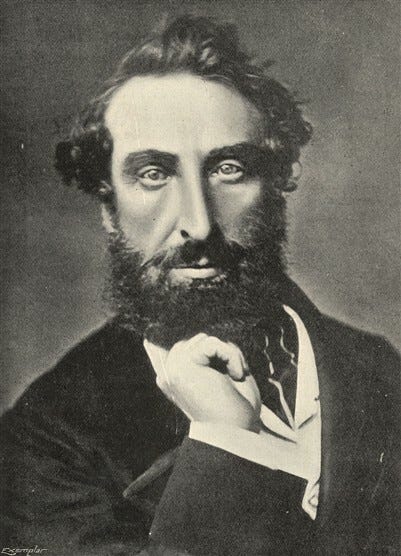The Pagan Revival of Solomon’s Temple and The Witches Coven on Baker Street
Edgar Poe as Cultural Warrior part 15
In the last two segments of this series (part 13 and part 14), we established that Sir Charles Warren, Grandmaster of the Quatuor Coronati Lodge, and London Metropolitan Police Commission from 1886-1888 was in direct communication with the principal black magician (Robert D’Onston Stephenson) behind the Jack the Ripper murders of 1888. We additionally established a much larger occult movement involving the Hermetic Order of the Golden Dawn and leading Theosophists in the gruesome ritual.
With these facts established, we may now embark upon the next phase of our exploration… The darker meaning of the Solomon Temple revival which both Warren and D’Onston Stephenson were involved in during the late 19th century.
We will also explore the deeper implications of the witches coven which D’Onston formed with two adepts of Theosophy’s Esoteric Section: Mabel Collins and Baroness Vittoria Cremers.
The Pagan Revival of Solomon’s Temple
What significance does Solomon’s Temple have in our story you ask?
For one thing, Sir Charles Warren, leading excavator and expert on the vast catacombs under the Temple Mount- made it no secret that he believed Solomon’s Temple and the large rock under the Dome of the Rock on the Temple Mount to be the site of ancient pagan sacrifices.
On December 12, 1867, Warren even hypothesized that the two sub caverns and vast network of tunnels under the Dome of the Rock were specifically designed to carry away the blood of sacrificed victims from the temple and into the surrounding land of Jerusalem. Warren wrote:
“The discovery of a shaft down to the water of the virgin’s fount threw considerable light upon the object of the rock-cut canals about Jerusalem, as proving then as, had been conjectured by some, to have been for conducting away the refuse and blood from the temple.”
Warren was also clearly obsessed with the belief that the Temple not only featured Kaballistic proportions built up around the Vesica Pisces (aka: the geometric configuration of the Whitechapel murder victims of 1888), but was also certain that the temple was a vast complex of mass human sacrifice which he and other Rosicrucians believed to be a source of power to channel demonic forces.
Warren’s obsession with Solomon’s Temple had less to do with anything popular Jews or Christians have read within the Old Testament, and much more to do with the fact that he (and all occultists associated with him) have promoted the belief that Solomon was not the monotheist King advertised in the old testament, but was a sorcerer king and overseer of occult sacrifices with a special devotion to the Sidonian deity Ashtoreth and Molech- the Canaanite deities of child sacrifice.
The deeper meaning of this occult interpretation of Solomon’s Temple will be addressed in the next installment.
Contemporary Freemason (and author of The Secrets of Solomon’s Temple) Kevin Gest writes of the origins of Solomon’s name as a metaphor for the cult of the Sun and Moon (or light and darkness) stating: “Because of its special features, the temple became known as the ‘Temple of Sol and Amon’. Sol meaning Sun, Amon meaning Moon. After his death Jedidiah was referred to as the man who built the Sol and Amon Temple, which became corrupted over time to Sol-amon and then to Solomon.”
The Manichean obsession with integrating darkness with light
Recall from Part 10 of this series, that the cult of the sun and moon was a key attribute of Rosicrucian cosmology and all Manichean sects which presume evil and darkness to be infused with ontological power counterbalancing the forces of good and light requiring occult adherents to come to the unfortunate conclusion that evil is a necessary component for the good, meaning evil is in a sense the cause of good.
This Manichean cosmology not only found itself embedded within early gnostic mystery schools, but found fertile soil within various chivalric orders (both Christian and Muslim alike) which were seeded during the Crusades, and which also formed the basis of the rise of Rosicrucianism in the 15th century.
Some samples of Rosicrucian symbolism emphasizing the integration of opposites can be found below.
The un-natural “coincidence of opposites” in this sick worldview quickly leads its disciple into a belief that enlightenment can only be achieved by infusing moral opposites together in a bid for a perverse Tao of creative destruction.
This integration was central to the teachings of the most influential occultist and founder of the Alexandria Lodge of England (and the Rosicrucian Society of Anglia)… Sir Edward Bulwer-Lytton.
As we saw in our previous installment, Sir Edward was the mentor who initiated Robert D’Onston Stephenson into the dark arts in 1861, and it was Sir Edward’s occult “fiction” which both shaped the cosmology of the Theosophists as well as the Nazis.
Nicholas Goodrick-Clarke writes in ‘The Occult Roots of Nazism’ that: “Madame Blavatsky discerned the unique source of their inspiration: the occult lore of ancient Egypt. Her fascination with Egypt as the fount of all wisdom arose from her enthusiastic reading of the English author Sir Edward Bulwer-Lytton. His novel The Last Days of Pompeii (1834) had been conceived of as a narrative of the impact of the Isis cult in Rome during the first century AD. His later works, Zanoni (1842), A Strange Story (1862), and The Coming Race (1871), also dwelt on esoteric initiation and secret fraternities dedicated to occult knowledge in a way which exercised an extraordinary fascination on the romantic mind of the nineteenth century. It is ironical that early theosophy should have been principally inspired by English occult fiction.”
The Integration of Good and Evil
Edward’s son Lord Robert Lytton followed in his father’s footsteps and enjoyed godlike power as England’s viceroy and Governor General to India from 1876-1880, during which time he sponsored the most luxurious feasts in the empire’s history, while simultaneously overseeing the enforced starvation of over 10 million Indians. This co-existence of gluttonous revelry with genocide was as unnatural as it was believed to be necessary by Robert Lytton.
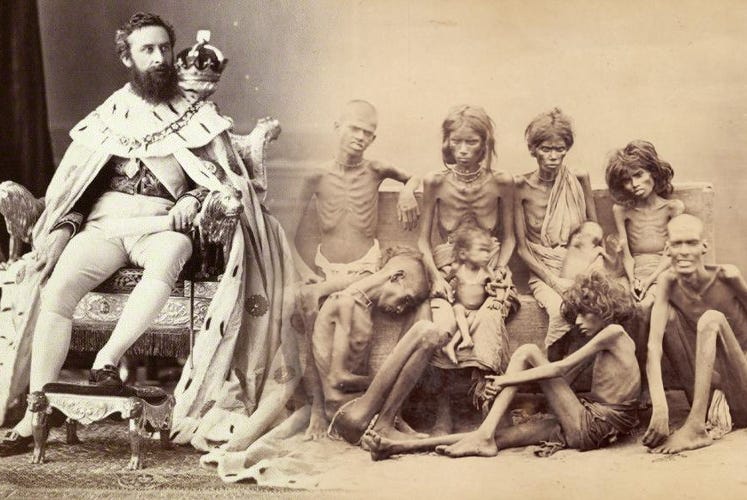
Author Jules Evans writes of Robert Lytton’s devotion to genocide:
“He [Lytton] was tasked with organizing the durbar to celebrate the crowning of Queen Victoria as empress of India. For this, he organized the largest meal in history, in which some 68,000 functionaries were fed.
While they feasted, millions of other Indians starved in the Great Famine of 1876–1878, a crop failure made much worse by Robert Lytton’s social Darwinian and Malthusian policies. He was, in his own words, ‘profoundly persuaded that every rupee superfluously spent on famine relief only aggravates the evil effects of famine, and that in all such cases waste of money involves waste of life.’
The British did provide some relief to the starving Indians, shepherding them into Malthusian ‘relief camps’ where they had to work for their food allowance. This allowance was fewer calories than prisoners would be given in Nazi camps, and the mortality rate in these relief camps was estimated at around 90%. Scholars estimate between five million and 10 million Indians died in the famine. Robert Bulwer-Lytton has been nicknamed ‘India’s Nero’ for his role in the ‘Indian holocaust’.”
The Ripper goes to India
From 1877-1878, Robert D’Onston Stephenson lived in India where he was a personal guest of his childhood friend Lord Robert Bulwer, and it was during this time that D’Onston described in his 1893 autobiography how he discovered the true power of magic.
It is unknown if D’Onston or Robert Lytton met with either Madame Blavatsky or Colonel Olcott (or Edward Lytton disciple Franz Hartman with whom Meghan Collins collaborated in the German Theosophists) during this period. However, considering that the Theosophist headquarters were then being moved from New York to India, and considering the unprecedented access which Blavatsky, Hartman and Olcott enjoyed with ALL of the princes and Brahmin leaders of India during the exact period of Lord Lytton’s rein of terror over India, it is hard to believe that the hand of the British Empire was not a hidden facilitator in some important measure.
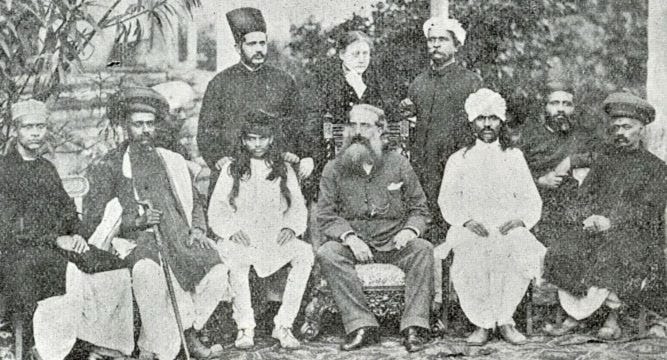
D’Onston Goes to Whitechapel
In the days prior to the Whitechapel killings of 1888, D’Onston had positioned himself perfectly to carry out the murders by admitting himself into London Hospital in Whitechapel (on July 27 1888) and discharging himself on December 7, 1888 (three weeks after the last murder).





